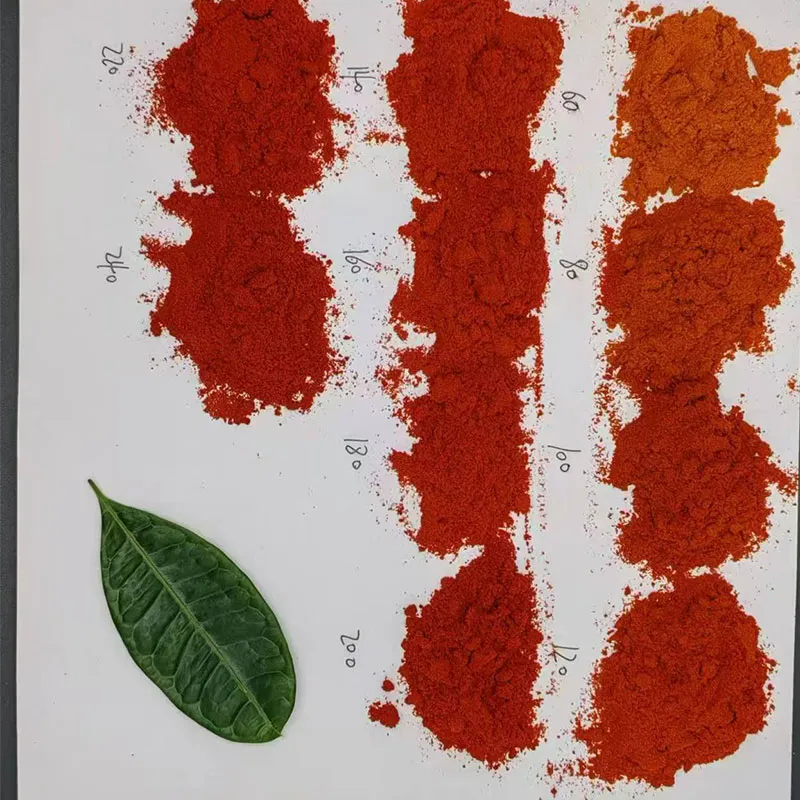- No. 268 Xianghe Street, Economic Development Zone of Xingtai city, Hebei 054001 China
- Byron@hbhongri.cn
paprika powder
The Versatile World of Paprika Powder
Paprika powder, a vibrant and flavorful spice, has captivated culinary enthusiasts and home cooks alike for centuries. This dynamic spice, derived from the dried and ground fruits of Capsicum annuum, is well-known for its rich color, ranging from deep red to bright orange. Despite its modest size, paprika holds the power to elevate dishes from mundane to extraordinary, making it a staple in kitchens around the world.
Historical Background
The history of paprika is as colorful as its appearance. Originally cultivated in Central and South America, bell peppers and chili peppers were introduced to Europe by explorers in the 16th century. Over time, the spice found a particularly stronghold in Hungary and Spain, where it became integral to the local cuisines. Hungarian paprika, renowned for its sweet and smoky flavors, is often considered the gold standard, while Spanish varieties can range from sweet to hot, reflecting the diversity of the country’s regional spices.
Types of Paprika
Paprika is not a one-size-fits-all spice; it comes in various types, each offering unique flavor profiles and heat levels. The primary varieties include
1. Sweet Paprika Often used in Hungarian dishes like goulash, sweet paprika is characterized by its mild flavor and vibrant color. It is perfect for adding depth and sweetness to recipes without overwhelming heat.
2. Smoked Paprika Known for its distinct, smoky aroma, this variety is made from peppers that have been dried over an oak fire. It adds a deep, complex flavor to dishes, making it a favorite for seasoning meats, stews, and even popcorn.
3. Hot Paprika For those who crave a bit of heat, hot paprika delivers a spicy kick that can transform any dish. Commonly used in Spanish cuisine, it’s perfect for adding a fiery twist to sauces, marinades, and rubs.
paprika powder

4. Paprika de La Vera A unique Spanish variety, this paprika is not only smoked but is also produced in a specific region of Spain, making it a protected designation of origin. Its intense flavor and aroma make it a prized addition to many recipes.
Culinary Uses
The uses of paprika powder in culinary applications are nearly limitless. Its primary role is as a seasoning and coloring agent. A sprinkling of paprika can enliven dishes such as deviled eggs, potato salads, and roasted vegetables, adding a splash of color and a hint of flavor. In meats, it serves as a key ingredient in rubs and marinades, enhancing the taste and appearance of grilled or roasted proteins.
Additionally, paprika is a cornerstone of various global dishes. In Hungarian cuisine, it’s essential for preparing the national dish, goulash. In Spain, it’s used in paella, lending its signature flavor to the saffron-infused rice and seafood. The Middle Eastern shakshuka, a dish of poached eggs in spicy tomato sauce, often finds its depth in the addition of paprika, showcasing its global versatility.
Health Benefits
Aside from its culinary allure, paprika also offers a range of health benefits. It is rich in antioxidants, which play a crucial role in combating inflammation and promoting overall health. The spice contains vitamins A, E, and C, which are vital for maintaining a healthy immune system, skin, and vision. The presence of capsaicin, the compound that gives chili peppers their heat, also aids in boosting metabolism and may contribute to pain relief.
Conclusion
In conclusion, paprika powder is far more than a simple seasoning; it is a vibrant spice steeped in history and bursting with flavor. Its diverse varieties cater to different palates, making it a beloved ingredient in kitchens worldwide. Whether you’re sprinkling it on a simple dish to enhance its flavor or using it as a key ingredient in traditional recipes, paprika powder is sure to add depth and interest to any culinary creation. So, next time you reach for that colorful jar, remember the journey it has taken and the endless possibilities it holds in your kitchen.
-
Turmeric Rhizome Powder: A Golden Treasure from Roots to TableNewsJul.28,2025
-
The Versatile Application Of Crushed Red Hot Peppers: Lighting Up The Red Flames On The Dining TableNewsJul.28,2025
-
The Paprika: A Touch Of Vibrant Red In Color, Flavor, And CultureNewsJul.28,2025
-
Ground Turmeric: A Modern Examination of an Ancient SpiceNewsJul.28,2025
-
Capsicum Liquid Extract: Features, Applications, and ChallengesNewsJul.28,2025
-
Application of Capsicum Liquid Extract in FoodNewsJul.28,2025







